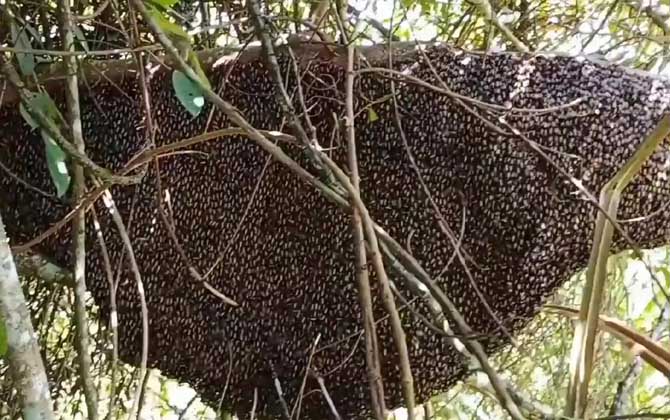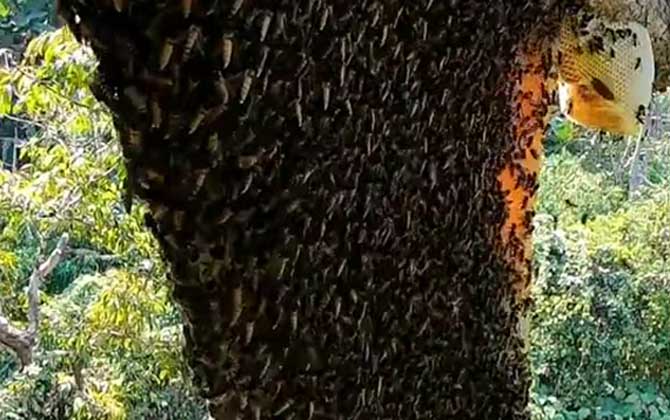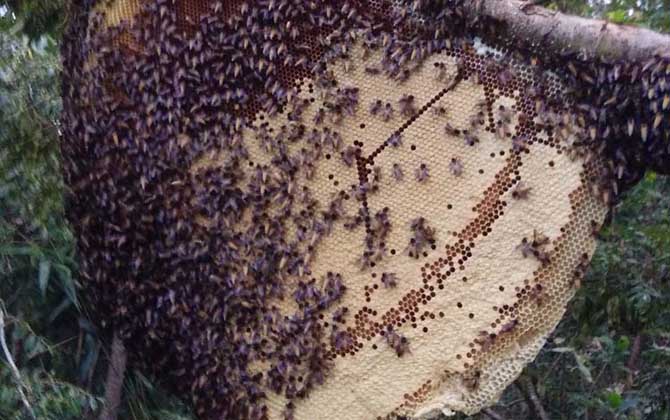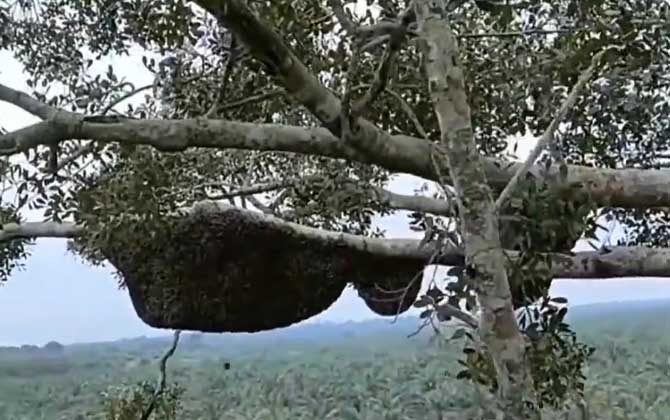Bees: An Overview of Apis Species
Bees, belonging to the genus Apis in the family Apidae, are vital resource insects with nine recognized species worldwide. These include:
- Dwarf Honeybee (Apis florea)
- Black Dwarf Honeybee (Apis andreniformis)
- Giant Honeybee (Apis dorsata)
- Black Giant Honeybee (Apis laboriosa)
- Sabah Honeybee (Apis koschevnikovi)
- Sulawesi Honeybee (Apis nigrocincta)
- Philippine Honeybee (Apis nuluensis)
- Western Honeybee (Apis mellifera)
- Eastern Honeybee (Apis cerana)
Among these, the Western and Eastern honeybees are most commonly recognized. This article focuses on distinguishing “Row Bees” (a collective term for four specific species) from other honeybee varieties.

I. Understanding Row Bees
Row Bees refer to four particular species known for their unique nesting patterns. Characterized by building single-comb nests arranged vertically on tree trunks or cliffs, they include:
- Black Giant Honeybee (A. laboriosa)
- Giant Honeybee (A. dorsata)
- Black Dwarf Honeybee (A. andreniformis)
- Dwarf Honeybee (A. florea)

II. Geographic Distribution
The four Row Bee species have distinct habitats:
| Species | Distribution |
|---|---|
| Black Giant Honeybee | Southern Tibet, Western/Southern Yunnan |
| Giant Honeybee | Southern Yunnan, Southern Guangxi, Hainan |
| Black Dwarf Honeybee | Southern Yunnan |
| Dwarf Honeybee | Southern Yunnan, Southern Guangxi |

III. Species Characteristics
- Black Giant Honeybee (A. laboriosa)
- Largest bee species (Queen: 21-24mm)
- Nests on high cliffs in Himalayan regions
- Known as “Himalayan Row Bee”
- Giant Honeybee (A. dorsata)
- Second largest (Queen: 20-22mm)
- Creates single-comb nests on tall trees
- Called “Rock Bee” or “Cliff Bee”
- Black Dwarf Honeybee (A. andreniformis)
- Small species (Worker: 8-9mm)
- Nests in shrubs of secondary forests
- Local name: “Little Row Bee”
- Dwarf Honeybee (A. florea)
- Smallest honeybee (Worker: 7-8mm)
- Builds nests in dense grass/bushes
- Known as “Grass Bee”

IV. Behavioral Ecology
- Social Structure
- Highly eusocial colonies with caste differentiation
- Interdependent survival: Queens rely completely on workers
- Division of Labor
- Workers: Foraging, nursing, and comb building
- Drones: Mating with virgin queens
- Queen: Egg-laying (up to 2,000 eggs daily)
- Nest Architecture
- Single vertical comb structure
- Hexagonal cells: Upper honey storage, lower brood rearing
- Natural propolis use for structural reinforcement
- Food Storage Strategy
- Seasonal hoarding behavior
- Honey/pollen reserves sustain colonies during dearth periods
- Unique communication through waggle dance for resource location
These remarkable insects demonstrate extraordinary ecological adaptations, with their exposed single-comb nests representing an evolutionary response to predator pressure in tropical environments. Their unique biology continues to fascinate entomologists and beekeepers alike.